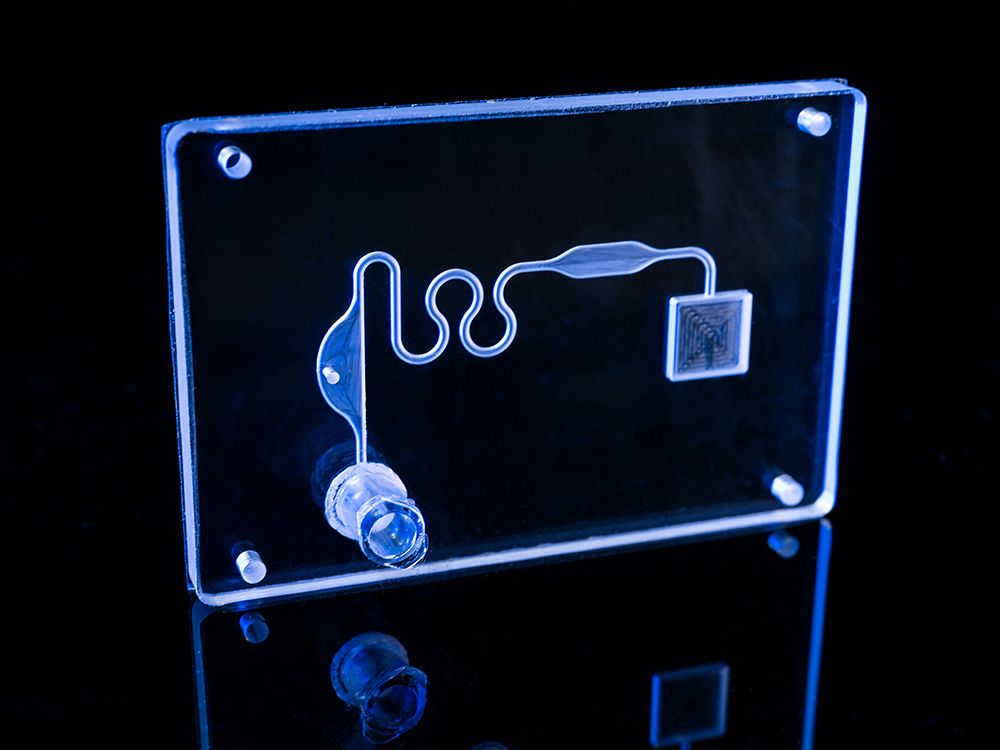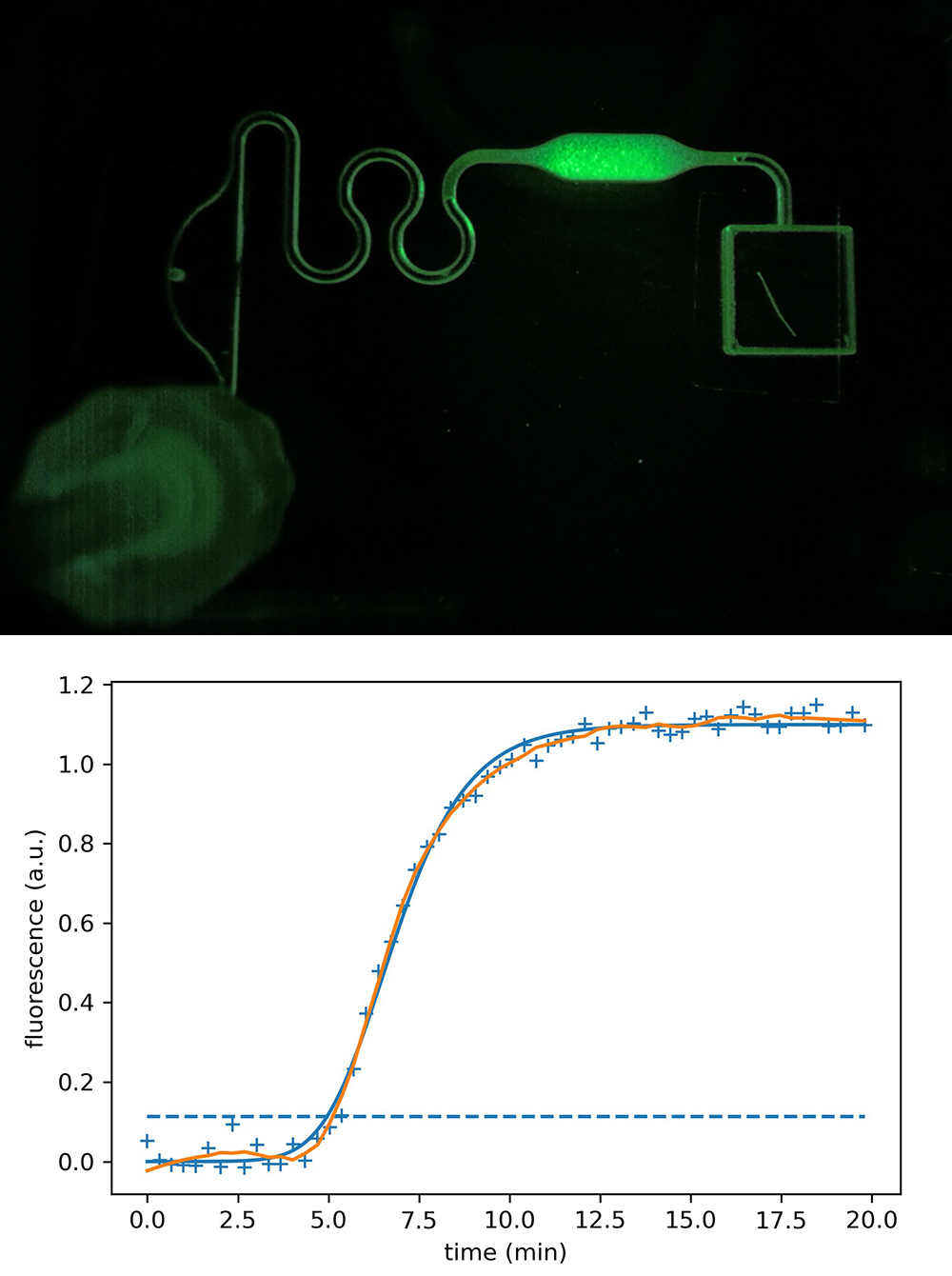Development of a system for the early detection of sepsis using isothermal amplification


Sepsis is a serious condition that causes an excessive inflammatory reaction in the body to fight infection, resulting in life-threatening complications such as organ failure and shock. It is responsible for one in five deaths globally and in Germany [1]. Early diagnosis is crucial for effective treatment and improved chances of survival. However, current diagnostic methods are slow, with markers like C-reactive protein and procalcitonin showing a delay of up to 24 hours upon symptom onset. Blood culture procedures even take several days for results. This delay in diagnosis can significantly impact sepsis patient outcomes, with mortality rates increasing by about 7% per hour in the presence of circulatory shock without prompt anti-infective therapy [2]. Faster diagnostic methods are needed to improve outcomes for sepsis patients.
The operating principle
Scientists from Fraunhofer IMM and the Department of Sports Medicine, Prevention and Rehabilitation at JGU Mainz have been working on the RESCUE-SEPS project to develop an early detection system for sepsis. The system uses a combination of a potential early marker and innovative microsystem technology to enable rapid testing at the point-of-care, such as in outpatient and emergency medical care settings. The system involves the quantitative analysis of circulating cell-free DNA (cfDNA) using isothermal amplification, which is done automatically in a microfluidic cartridge. Only a few drops of blood are needed for the test, eliminating the need for time-consuming sample preparation.
Specifications and application areas
The project team has successfully developed an assay for isothermal cfDNA amplification using whole blood samples. A prototype test cartridge and analyzer are operational. "On chip" implementation experiments show that the system can automate isothermal amplification and real-time measurement of cfDNA within minutes. By this, the system has the potential to provide near-patient rapid testing for early sepsis detection or identifying an increased risk of sepsis. In addition, it allows disease monitoring for optimal therapeutic management.
Our R&D services
The technology described opens a door to a variety of possible applications. The assay can be easily adapted to target different nucleic acids and eliminates the need for complex sample preparation procedures. The technology is particularly suited for point-of-need testing where an automated sample-to-answer system is required, providing highly sensitive qualitative and quantitative results.
[1] Rudd KE et al. Global, regional, and national sepsis incidence and mortality, 1990-2017: analysis for the Global Burden of Disease Study. Lancet. 2020 Jan 18;395(10219):200-211.
[2] Angstwurm MWA. Früherkennung der Sepsis im häuslichen Umfeld [Early detection of sepsis in the home setting]. MMW Fortschr Med. 2023 Jun;165(11):56-60.
The project was funded by the Ministry of Economy, Transport, Agriculture and Viticulture of Rhineland-Palatinate.
 Fraunhofer Institute for Microengineering and Microsystems IMM
Fraunhofer Institute for Microengineering and Microsystems IMM